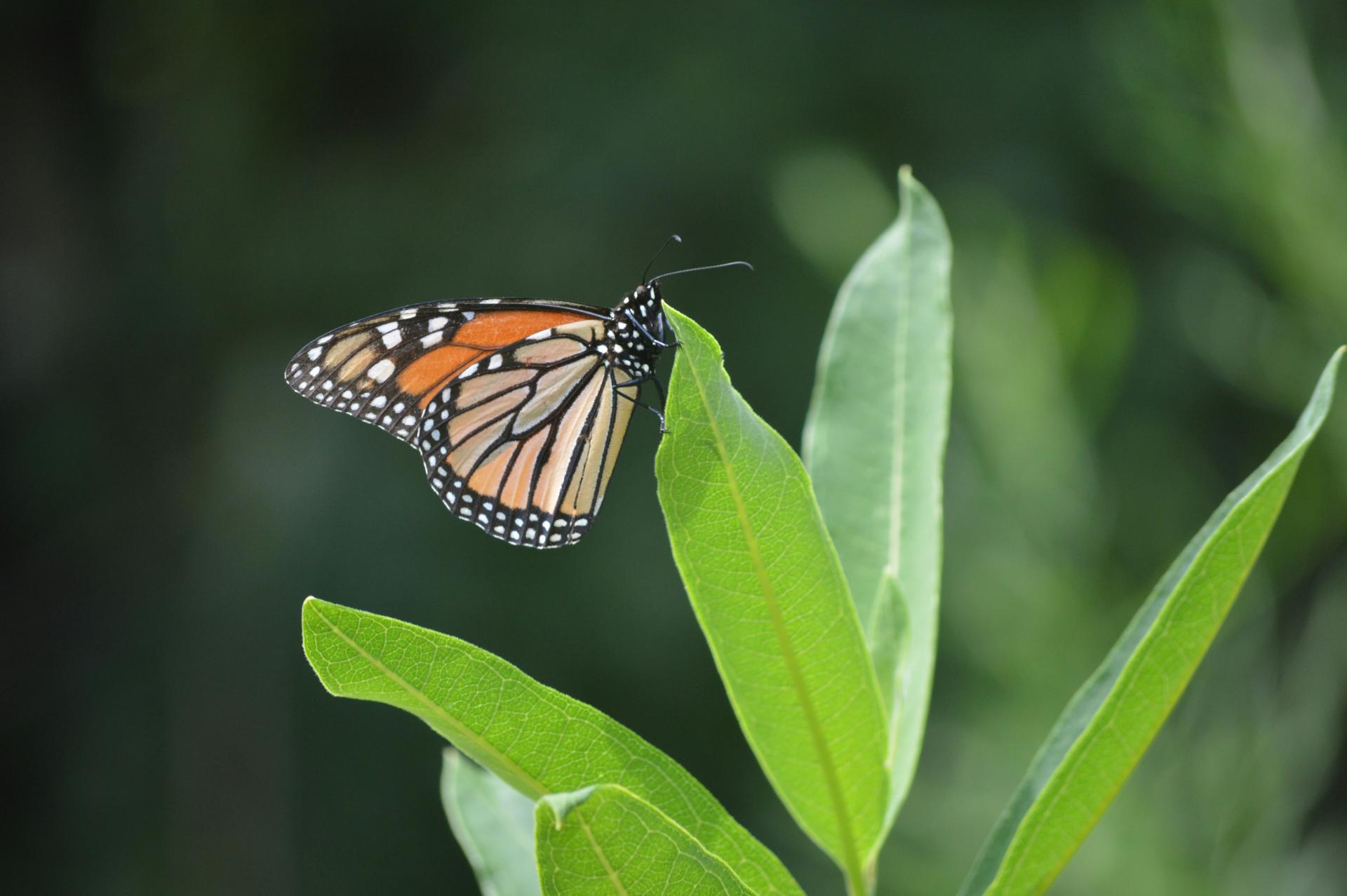You are here
Be A Better Gardener: Coevolution in the Garden
Be A Better Gardener: Coevolution in the Garden
by Thomas Christopher
Gardeners tend to think of their plants as passive victims of the insects that feed on them; it’s the “pests,” as we see it, that take the active role when they come to eat the plant’s tissues or suck their sap. In fact, though, as I learned during a recent conversation with Dr. Anurag Agrawal of Cornell University, nothing could be farther from the truth.
Plants have evolved all sorts of defenses to protect themselves against hungry herbivores. Some of these defenses are simple, such as the spines or stiff hairs that make it more difficult for insects to reach their leaves. Other defenses may be quite sophisticated. Consider, for example, milkweed plants. These plants long ago evolved to permeate their tissues with a type of virulent toxin known as “cardenolides” so that most insects and other herbivorous animals cannot eat them without being poisoned. In addition, milkweeds have evolved a latex-filled sap that flows out of any wound to gum up the mouths of insects attempting to graze on their leaves. These defenses have made milkweeds so unappealing that most herbivores won’t even try to consume them.
If the plant can evolve, however, so can insects, and certain species of insects, notably monarch butterfly caterpillars, have developed an ability to disarm the milkweeds’ defenses. This means these insects — and there is a cadre of other species such as a longhorn beetle, a root borer, and a couple of types of aphids that have developed similar immunities to milkweed toxins — can exploit a food source for which there is very little competition, which is a great advantage. With the advantage comes a limitation, for in committing to this particular evolutionary path, milkweed eaters typically have failed to develop the ability to disarm the defenses of other types of plants. As a result, they have created a dependency on milkweed. If the milkweed evolves a new defense, the insects that feed on them must evolve the ability to cope with that too. Over time, this process of “coevolution” leads to a deep and exclusive relationship between the two parties. In the case of the monarch butterflies, their association with a toxic plant has provided them with not just food but also protection against predators, because the monarch caterpillars become so suffused with cardenolides that almost no birds can stomach them, and even after they emerge from their cocoons as butterflies they still maintain their toxicity.
Understanding that such relationships are intrinsic to the life in your garden can help you to design it more intelligently. If you want to see monarch butterflies, you have to plant milkweeds— and, as Dr. Agrawal pointed out to me, they must be milkweeds of the proper species. Tropical milkweed (Asclepias curassavica) has been marketed in recent years to gardeners anxious to attract and support monarch butterflies. It’s an attractive plant and monarch caterpillars can feed on it successfully. Because it hails from tropical regions, however, it didn’t coevolve with our temperate region monarchs, and as a result, it doesn’t serve their needs as well.
For example, unlike our native milkweed species, the tropical milkweed doesn’t go dormant with the onset of chilly weather. That means it remains attractive to monarch butterflies looking to lay their eggs long after the native species, and it can thus delay the butterflies in starting their migration, which is likely to prove fatal. And where the climate is mild enough that the tropical milkweed overwinters successfully as an evergreen (USDA zone 8 and south), it serves as a haven for an overwintering monarch parasite. This is carried from milkweed to milkweed by the butterflies themselves, and it waits on the foliage to infect any monarch caterpillars that hatch on that plant. This infection weakens the butterflies into which these caterpillars develop so that they are less likely to reproduce or migrate successfully. Our native milkweeds can also host the parasite, but when they go dormant in the fall and die back to the ground, they cleanse themselves. The tropical milkweed, which never enters dormancy, does not.
This process of coevolution is one of the reasons why including native plants in your garden provides extra support for native insects and the wildlife such as songbirds that eat them. To learn more about this subject, I suggest you listen to the rest of my conversation with Dr. Agrawal on the Berkshire Botanical Garden’s “Growing Greener” podcast, available at www.berkshirebotanical.org.
Be-a-Better-Gardener is a community service of Berkshire Botanical Garden, located in Stockbridge, Mass. Its mission, to provide knowledge of gardening and the environment through a diverse range of classes and programs, informs and inspires thousands of students and visitors each year. Thomas Christopher is a volunteer at Berkshire Botanical Garden and is the author or co-author of more than a dozen books, including Nature into Art and The Gardens of Wave Hill (Timber Press, 2019). He is the 2021 Garden Club of America's National Medalist for Literature, a distinction reserved to recognize those who have left a profound and lasting impact on issues that are most important to the GCA. Christopher’s companion broadcast to this column, Growing Greener, streams on WESUFM.org, Pacifica Radio and NPR and is available at berkshirebotanical.org/growinggreener.
Help Our Garden Grow!
Your donation helps us to educate and inspire visitors of all ages on the art and science of gardening and the preservation of our environment.
All donations are 100 percent tax deductible.


